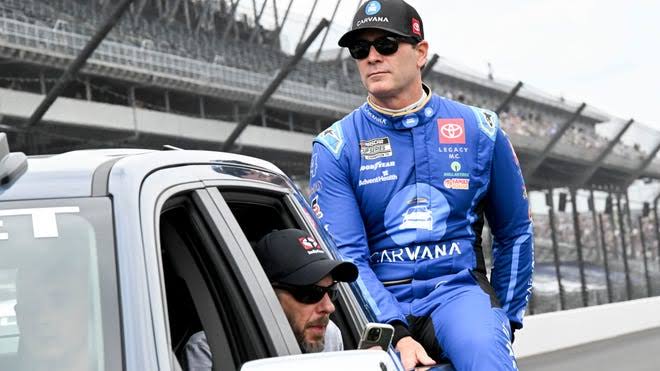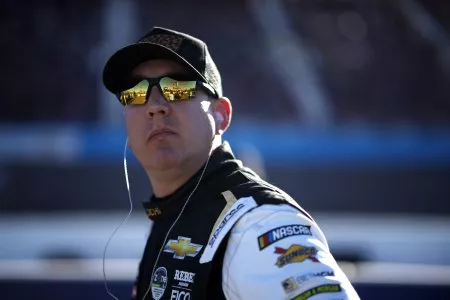Chase Elliott’s Exit Strategy: Unmet Expectations at Hendrick Motorsports
Chase Elliott, a name synonymous with NASCAR success and popularity, has had a storied career since he entered the sport. As a key driver for Hendrick Motorsports, his tenure has been marked by significant achievements but also by unmet expectations that have led to speculation about his future. This article explores Elliott’s career trajectory, the factors contributing to his current position, and the implications of an exit strategy from Hendrick Motorsports.
Early Career and Rise to Prominence
Chase Elliott made his NASCAR debut in 2014, quickly establishing himself as a force to be reckoned with. He captured the NASCAR Xfinity Series championship in 2014, becoming the youngest champion in series history at just 18 years old. This success paved the way for his promotion to the Cup Series in 2016, driving the iconic No. 24 car, previously helmed by Jeff Gordon.
Elliott’s arrival in the Cup Series was met with immense expectations. His fan-friendly persona and impressive driving skills endeared him to fans, quickly making him one of NASCAR’s most marketable drivers. He consistently performed well, accumulating multiple wins and playoff appearances, and even earning the coveted Most Popular Driver award several times.
Expectations at Hendrick Motorsports
Joining Hendrick Motorsports, one of the most successful teams in NASCAR history, came with high expectations. Elliott was viewed as the heir apparent to Gordon, tasked with continuing the legacy of excellence. While he did secure a number of victories, including his first major win at the 2020 NASCAR Cup Series championship race, his performance has been inconsistent in recent seasons.
The pressure to perform at Hendrick is immense. The team has a rich history, including multiple championships and a roster of legendary drivers. Elliott’s struggles to consistently compete for championships in recent years have raised questions about his fit within the organization and his potential long-term future.
The Frustration of Unmet Expectations
In recent seasons, Elliott’s performance has not lived up to the high standards set by both his own aspirations and those of Hendrick Motorsports. Several factors have contributed to this trend:
1. Performance Fluctuations
While Elliott has had standout moments, he has also faced periods of underperformance. Mechanical issues, accidents, and inconsistent finishes have plagued his campaigns, particularly in the playoffs. Fans and analysts expected more consistency from a driver of his caliber, leading to frustration among the fanbase.
2. Team Dynamics
Hendrick Motorsports has experienced a shift in team dynamics, especially with the emergence of younger talent like Kyle Larson and William Byron. As these drivers have started to excel, some have speculated that Elliott’s position as the team’s top driver has come under threat. The internal competition can lead to tensions and impact performance, raising questions about his ability to lead the team moving forward.
3. Injury Challenges
Elliott’s recent injuries have also affected his performance. A significant leg injury in 2023 sidelined him for several races, disrupting his momentum and forcing the team to rely on substitutes. Such injuries not only impact the driver’s performance but can also alter team strategy and morale.
The Landscape of NASCAR and the Market
As the NASCAR landscape evolves, teams are looking for ways to stay competitive. The advent of new technology, changes in car design, and shifts in fan expectations all play a role in shaping team strategies. Hendrick Motorsports, known for its innovation, is always seeking to adapt.
1. Sponsorship and Financial Considerations
Sponsorship plays a crucial role in a driver’s future. As one of NASCAR’s most marketable figures, Elliott has enjoyed substantial sponsorship deals. However, the performance of a driver directly influences sponsorship value. If Elliott’s struggles continue, there may be pressure from sponsors to reassess their commitments.
2. Team Direction and Focus
Hendrick Motorsports has a reputation for stability, but the team’s direction can change based on performance. If Elliott cannot regain his status as a championship contender, the organization might consider restructuring its lineup. This could include exploring options for Elliott’s exit, especially if younger drivers continue to outperform him.
Potential Exit Strategies
If Elliott’s performance does not improve, several exit strategies could come into play. These strategies could range from contract negotiations to seeking opportunities with other teams.
1. Contract Negotiations
Elliott’s contract with Hendrick Motorsports will be a pivotal factor in determining his future. If the team feels that a change is necessary, they could approach him for renegotiations that might include a release from his contract. This could enable both parties to pursue new opportunities without burning bridges.
2. Exploring Other Teams
Should an exit from Hendrick become a reality, Elliott would have several options. Given his popularity and talent, he would likely attract interest from other teams looking to bolster their rosters. Teams with competitive equipment and a supportive environment could provide a fresh start for Elliott.
3. Transitioning Roles within the Sport
If racing at the highest level does not pan out, Elliott could consider alternative roles within NASCAR. His extensive experience and fan appeal could make him a valuable asset as a team advisor, commentator, or even a coach for emerging drivers. Transitioning to a different role could allow him to stay connected to the sport while leveraging his expertise.
Implications for Hendrick Motorsports
The potential exit of Chase Elliott would have significant implications for Hendrick Motorsports. As one of the team’s marquee drivers, his departure could alter the team’s identity and impact its marketing strategy.
1. Shifting Fan Dynamics
Elliott’s popularity has helped attract a younger demographic to NASCAR. His exit could lead to a decline in fan engagement, particularly among his dedicated followers. The team would need to consider strategies to maintain its fanbase and attract new supporters.
2. Impact on Team Performance
Transitioning to a new driver could disrupt team performance. Elliott’s knowledge of the car and experience within the organization are invaluable. A new driver would require time to acclimate, potentially resulting in a period of adjustment that could affect performance on the track.
3. Reevaluation of Team Strategy
Hendrick Motorsports would need to reevaluate its overall strategy should Elliott leave. This could involve reshuffling existing talent, scouting for new drivers, or altering its approach to team dynamics and development.
Conclusion
Chase Elliott’s journey at Hendrick Motorsports has been a mix of triumph and challenge. While his early career showed immense promise, recent seasons have raised questions about his future with the organization. As unmet expectations continue to shape the narrative, the potential for an exit strategy looms large. Whether through contract negotiations, exploring other opportunities, or transitioning to a different role within the sport, Elliott’s next steps will be closely watched by fans and analysts alike.
As NASCAR evolves, the dynamics of teams and drivers will undoubtedly shift. Chase Elliott’s legacy in the sport is firmly established, but the future remains uncertain. The decisions made in the coming years will not only impact Elliott but also reshape the landscape of Hendrick Motorsports and NASCAR as a whole. Whether he remains a key player in the sport or transitions into a new role, one thing is clear: Chase Elliott’s influence on NASCAR will be felt for years to come.






